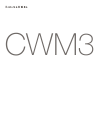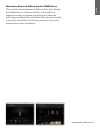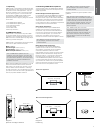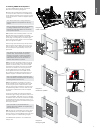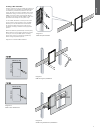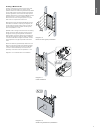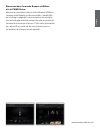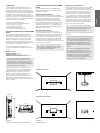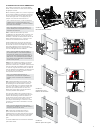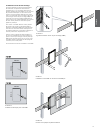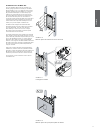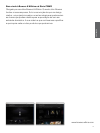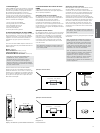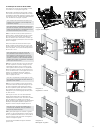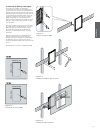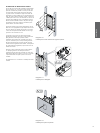
6. Using a Back-box Kit
Custom install back-box kits comprise a re-proof
box that can be tted behind in-wall or ceiling
speakers before the sheetrock (plasterboard) is tted
to the studs (joists). As well as enabling compliance
with re regulations, back-boxes also help optimise
speaker performance by providing a dened acoustic
loading volume. A minimum clearance depth of
90mm from the outer stud (joist) plane to any rear
obstruction is required to t a back-box.
Back-boxes incorporate holed side anges that are
intended to be nailed to adjoining studs (joists). All
the nail holes should be used to help minimise the
risk of the ange vibrating against the stud (joist)
when the speaker is in use.
Speaker cable is bought into back-boxes via sealing
glands. Once the cable has been brought through
the gland, and the gland tightened, re-retardant
sealing mastic should be used to seal the assembly.
Ensure that a generous length of cable is available
in the back-box before the gland is sealed. A cable
clamp adjacent to the gland provides cable strain
relief.
When the sheetrock (plasterboard) is tted over the
back box a generous bead of re-retardant sealing
mastic should be applied to the back box anges
in order to seal the assembly and minimise the
possibility of vibration when the speaker is in use.
Diagrams 10-12 illustrate back-box installation.
6
ENGLISH
Diagram 10
Back-box stud (joists) installation
Diagram 11
Cable installation
Diagram 12
Sheetrock (plasterboard) installation



